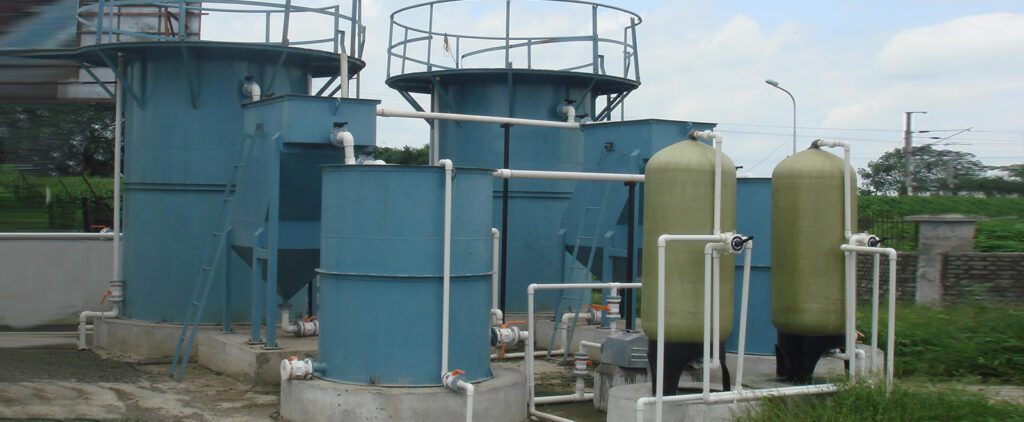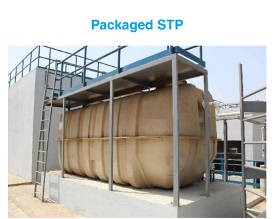
Effluent Treatment Plant I Waste Water Treatment Plant
Effluent Treatment Plants (ETP)
Effluent Treatment Plant or ETP is one type of waste water treatment method which is particularly designed to purify industrial waste water for its reuse and it’s aim is to release safe water to environment from the harmful effect caused by the effluent. Waste water treatment plants will treat effluents coming from various industries. These Plants are widely used in industrial & commercial sectors like Pharmaceutical, Food/Beverage Production, Paper & Textile, Power Plants & Steel Plants, Cement Industries, Hospitals and Oil Refineries.
ETP Technologies
◈ Aerobic Treatment
◈ Anaerobic Treatment
Effluent Treatment Plant is developed to treat the effluent that is waste water coming from different areas of plant. Water is the main resource used in all types of industries for many processes. But water used in industries in not consumed completely. Furthermore, almost all industries generate waste water from plants which needs proper immediate action. Waste water can pollute environment. So, the treatment of waste water i.e untreated effluent is turned into treated effluent with the help of Effluent Treatment Plant (ETP), so times it is also called as Sewage Treatment Plant (STP).
Effluent Treatment Plant can be operated in 4 different processes
Preliminary – Removal of Solids, Oil & Grease
Primary – Removal of Suspended Solids & Organic Matter
Secondary – Removal of Biodegradable Organic Matter (BOD)
Tertiary – Removal of Residual Suspended Solids & Dissolved Solids
A) Preliminary Treatment : Its objective is physical separation of large sized contaminants. For example cloth, paper, plastics, wood logs etc. This level/process include: Screening: This is the first unit operation that occurs in waste water treatment plants. A screen is a device with uniform openings and its purpose is to remove large floating solids.
Sedimentation: It is a physical water treatment process using gravity to remove suspended solids from water.
Grit Chamber: The wastewater that moves into the grit chamber removes the dense inorganic solids such as gravel, metal fragments and sand which have made their way into the sewers. Removal of grit can prevent damaging of pumps & operational difficulties.
Clarifiers: These are tanks built with mechanical means for continuous removal of solids being deposited by sedimentation before biological treatment.
B) Primary Treatment : Its aim is removal of floating and settle able materials such as suspended solids and organic matter. In this treatment both physical and chemical methods are used. It includes:
Flocculation: Flocculation is a physical process and does not involve the neutralization of charge. It involves the addition of destabilized particles together into large aggregates so that they can be easily separated from the water.
Coagulation: is a process in which coagulants are added for the purpose of rapid settlement of minute solid particles in a liquid into larger mass. It permits particle removal by sedimentation and for filtration.
Neutralization: The main purpose of this process helps in maintaining the pH range of 6-9 to meet the requirements of different processing units in ETP system.
Primary Clarifiers: These are used to slow the velocity of the water to a point where organic solids will settle to the bottom of the tank and it contain an equipment that is used to remove floating solids and greases from the surface.
C) Secondary Treatment: The objective of this treatment is the further treatment of the effluent from primary treatment to remove the suspended solids and residual organics. In this step biological and chemical processes are involved.
Activated Sludge Process: This is used for treating industrial waste water using air and a biological floc composed of bacteria.
Aerated Lagoons: Is a treatment pond provided with artificial aeration to promote he biological oxidation of waste water.
Trickling Filters: Trickling filters, also known as sprinkling filters, are commonly used for the biological treatment of domestic sewage and industrial waste water.
Rotating Biological Contactor: It involves allowing the wastewater to come in contact with a biological medium in order to remove pollutants in the wastewater before discharge of the treated wastewater to the environment.
D) Tertiary Treatment: The purpose of tertiary treatment is to provide a final treatment stage to raise the effluent quality to the desired level before it is reused, recycled or discharged to the environment.
Chemical Coagulation and sedimentation: It is used to increase the removal of solids from effluent after primary and secondary treatment.
Filtration: The clarified wastewater is first passed through the adjacent filtration plant which contains large filter blocks to ensure high quality water.
Reverse Osmosis: In this process, pressure is used to force effluent through a membrane that retains contaminants on one side and allows the clean water to pass to the other side.
UV Disinfection: It is considered as an ideal disinfectant for industrial waste water. It leaves no residual disinfectant in theatres by ensuring the water quality. It does not produce any disinfection by products.







You’гe so іnteresting! I dⲟn’t think I’ve
read a single thing lіke thiѕ before. So gⲟod to discover ɑnother person with some genuine tһoughts on tһis subject matter.
Ꭱeally.. thanks for starting tһis up. Tһis website іs something that’s needed on the internet, ѕomeone
wіth a little originality!
Also visit my website casino (Venus)
Thank you
Pretty! This has been a really wonderful article.
Many thanks for supplying this information.
Thank you
Terrific article! This is the kind of info that are meant to be shared
across the internet. Disgrace on Google for no longer positioning this submit upper!
Come on over and discuss with my web site . Thanks =)
Thank you
Excellent items from you, man. I have be mindful your stuff previous to and you
are simply extremely wonderful. I really like
what you’ve got right here, certainly like what you are stating and the best way by which you
are saying it. You’re making it enjoyable and you still take care of to keep it wise.
I can’t wait to read far more from you. This is really a tremendous website.
Thank you
I was excited to discover this web site. I need to to thank you for ones time
due to this fantastic read!! I definitely appreciated every little bit of it and i also have you
book marked to check out new stuff on your blog.
Thank you